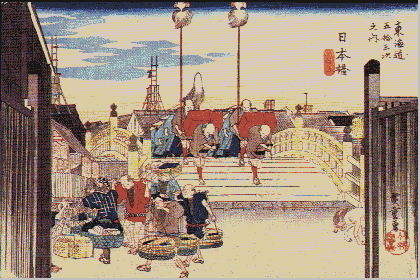
H381MODERN JAPAN
THE PATTERN OF JAPAN'S PAST

Jomon ca. 12,000-300 bc |
|
Yayoi ca. 300 bc-300 ad |
|
Kofun or Tomb Pd. 300-700 ad(around 400-450 armor and horse-trappings begin to appear on Haniwa in tombs; era of Ojin tenno and formation of early state?) |
| The Classical Era |
710-1160s = |
"Aristocratic Bureaucracy" - Imperial Court in Kyoto = political center; Lifestyle is refined and elegant |
| The Medieval Era |
1160s-1600 = |
"Feudal Fluidity" - central authority weakens, Local Warlords (Daimyo) become dominant |
| The Early Modern Era |
1600-1868 = |
"Integral Bureaucracy" - Strong Central Govt operated by the Tokugawa Shogun who controls all the Daimyo who become his vassals, but their control over land and people is indrect; it is not absolute; they do not claim to rule ALL of Japan, just their own fief or lands. |
A. Wars of Unification |
The 3 Great Unifiers: |
|
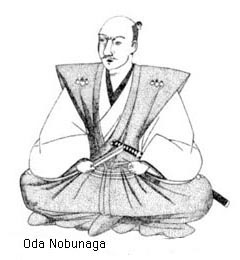 |
Oda Nobunaga (1534-1582) |
|
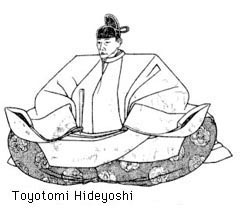 |
Toyotomi Hideyoshi (1536-1598) |
|
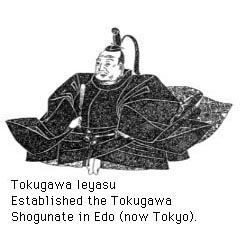 |
Tokugawa Ieyasu (1542-1615)On the Battle of Sekigahara:A "heads inspection" was performed at Lord Tokugawa's
final encampment just north of Sekigahara along the Hokkoku Road, where
he viewed the nearly 4,000 enemy heads taken in battle. Within three
days, Lord Ishida Mitsunari was captured in the area of Mount Ibuki and
taken to Kyoto with other captive leaders of the Western Army. All were
executed on the river bed within a matter of days. Having
|
Nobunaga: Nakanakuba, koroshite shimau--Hototogisu: "If the hototogisu doesn't sing, I will kill it."
Hideyoshi: Nakanakuba, nakasete miseyou --Hototogisu: "If the hototogisu doens't sing, I will make him sing!"
Ieyasu: Nakanakuba, naku made matou--Hototogisu: "If the hototogisu doesn't sing, we'll wait until he does." Suggesting Ieyasu possessed patience and cunning.
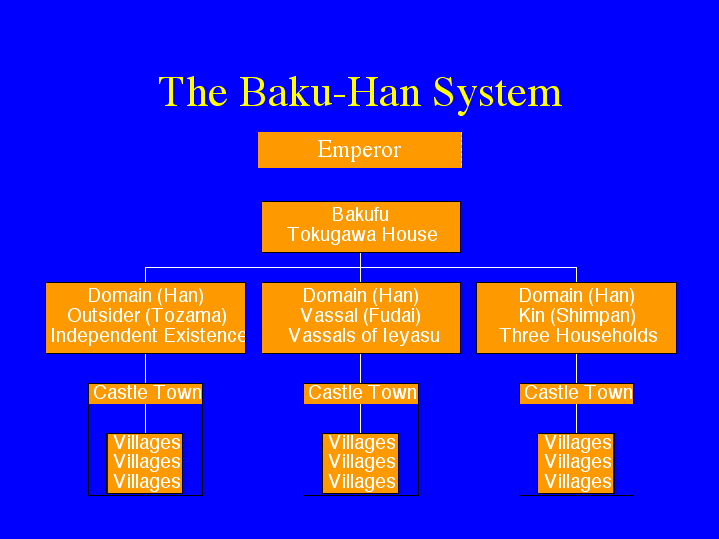
Interestingly, the villages were virtually free from samurai presence. How do you think that worked?